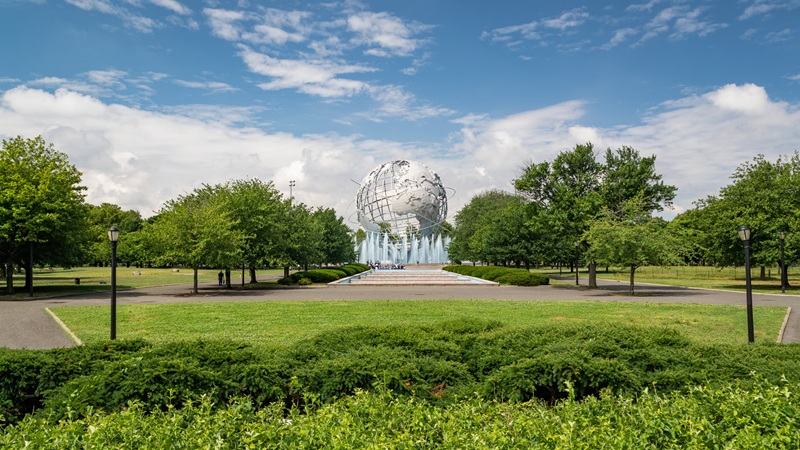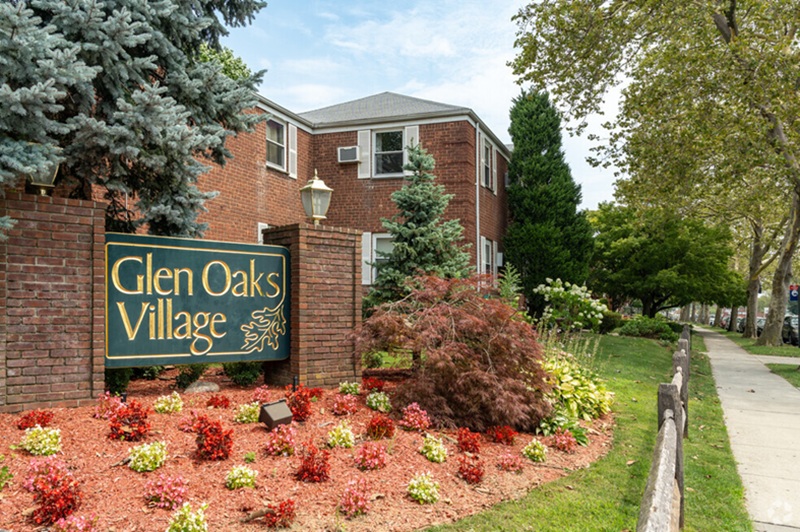
Flushing Meadows-Corona Park is one of the largest and most iconic public parks in New York City, covering over 1,200 acres in the borough of Queens. Known for its rich history, diverse cultural significance, and wide array of recreational activities, this park serves as a vital hub for both locals and visitors from all over the world. It stands as a testament to New York City’s growth and diversity, making it one of the city’s most beloved green spaces.
A Rich History
Flushing Meadows-Corona Park has a unique and storied past that dates back to the early 20th century. The land was originally used as a swampy area before being transformed for the 1939-40 New York World’s Fair. The park’s most recognizable landmark, the Unisphere, was built for this fair and became a symbol of global unity and technological progress. It was a focal point for the fair’s theme of “Building the World of Tomorrow.”
The park again hosted the 1964-65 New York World’s Fair, which celebrated the achievements of modern science, technology, and international cooperation. The fair’s legacy can still be seen today in several structures, including the Queens Museum, which housed the famous Panorama of the City of New York, and the New York Hall of Science, which continues to educate visitors about science and innovation.
Following the fairs, the park was transformed into a permanent recreational space, with landscaping, sports facilities, and cultural institutions making it a year-round destination for people of all ages.
Key Features and Attractions
Flushing Meadows-Corona Park is home to a variety of attractions, both historical and recreational, making it one of the most versatile parks in New York City.
- The Unisphere
The most famous feature of the park, the Unisphere, is a massive stainless-steel globe that stands 12 stories tall. Created for the 1964 World’s Fair, it represents the theme of global unity and is a stunning visual centerpiece. It is often a popular spot for tourists and locals alike to take photos and enjoy the surrounding green space. - Queens Museum
Located within the park, the Queens Museum is a renowned cultural institution that features exhibitions on art, history, and design. It is home to the Panorama of the City of New York, a detailed model of New York City that was created for the 1964 World’s Fair and continues to be a fascinating exhibit for visitors. The museum also offers various educational programs and community events. - New York Hall of Science
Another standout attraction is the New York Hall of Science, a hands-on science museum that encourages learning through interactive exhibits. It’s particularly popular among families, offering exhibits on physics, biology, and technology. The museum also has outdoor exhibits and a science playground that engage visitors in fun and educational activities. - Flushing Meadows-Corona Park Tennis Center
For sports enthusiasts, the park is home to the USTA Billie Jean King National Tennis Center, which hosts the US Open, one of tennis’ most prestigious tournaments. The tennis center is open year-round, offering tennis lessons, courts for public use, and a chance to watch professional matches during the US Open. - Willow Lake
Nestled within the park is Willow Lake, a scenic body of water surrounded by trails and natural beauty. It’s a peaceful spot for birdwatching and enjoying the outdoors. The lake provides a habitat for various species of birds and wildlife, adding to the park’s role as a sanctuary for nature in the heart of the city. - Playgrounds and Sports Fields
Flushing Meadows-Corona Park offers ample space for outdoor activities, with numerous playgrounds, sports fields, and picnic areas. The park has baseball fields, soccer fields, basketball courts, and running tracks, making it a popular location for both casual recreation and organized sports leagues.
Cultural Diversity and Community
Flushing Meadows-Corona Park is a reflection of the diverse communities in Queens. It draws people from all walks of life, from local residents to tourists from around the world. The park is home to several cultural festivals throughout the year, including events that celebrate the various ethnic communities that make up the borough.
The park is a gathering place for immigrants, families, and people of all ages. It serves as a place of relaxation, leisure, and cultural exchange, contributing to the vibrancy of the surrounding neighborhoods. Additionally, the park hosts public events such as free outdoor concerts, movies, and community celebrations, which help foster a sense of belonging and pride among its visitors.
Environmental Importance
Flushing Meadows-Corona Park plays an essential role in the ecological health of the city. Its vast green spaces provide a natural respite from the urban landscape, contributing to the reduction of the “urban heat island” effect and improving air quality. The park’s lakes and wetlands offer important habitats for wildlife, including migratory birds, while the trees and plants help mitigate pollution and provide shade for visitors on hot summer days.
Moreover, the park’s efforts to remain sustainable include ongoing projects aimed at preserving its natural beauty while enhancing recreational opportunities. Environmental stewardship has become an important part of the park’s mission as it continues to serve as a valuable resource for the community.
Challenges and Future Prospects
As one of New York City’s most popular parks, Flushing Meadows-Corona Park faces some challenges, including maintaining its aging infrastructure and managing the growing number of visitors. Balancing the demands of modernization with the preservation of its historic landmarks and green spaces will be a key issue in the coming years. Additionally, there are ongoing efforts to improve accessibility, ensuring that everyone can enjoy the park regardless of age or ability.
However, the park’s future looks bright, with continued investment in its development and the promise of even more cultural and recreational opportunities for future generations. The park remains a testament to the resilience and diversity of Queens and New York City as a whole.
Conclusion
Flushing Meadows-Corona Park is not just a park; it is a cornerstone of Queens’ identity and a symbol of New York City’s global significance. With its historical landmarks, wide-ranging recreational opportunities, and cultural relevance, the park continues to be a beloved destination for people of all ages and backgrounds. Whether it’s enjoying a concert, playing a game of tennis, or simply relaxing by the Unisphere, Flushing Meadows-Corona Park offers something for everyone—making it a true green gem in the heart of Queens.

